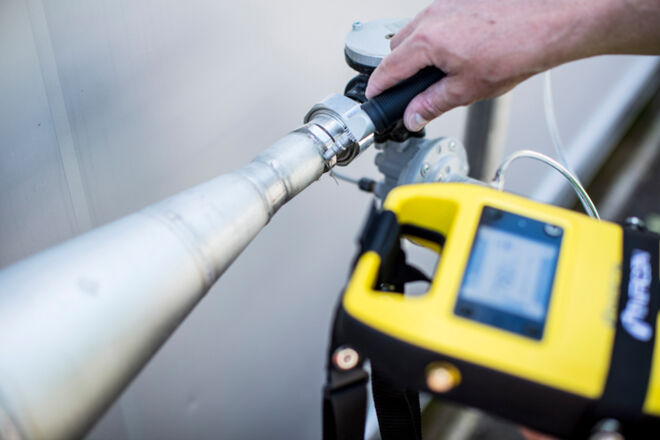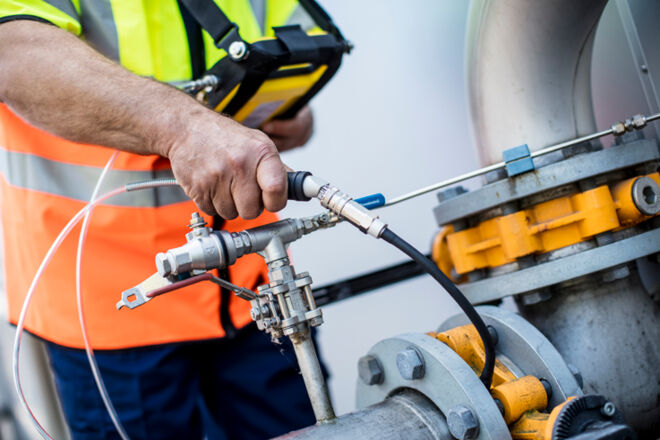Tackling Methane Emissions with Modern Methane Monitoring Tool
Identifying, Measuring and Reporting of Methane Emissions at the Heart of the EU Methane Regulation
In the fight against climate change, the European Union has taken a significant step forward with the introduction of Regulation (EU) 2024/1787 entered into force on August 4th, 2024. This regulation aims to reduce methane emissions in the energy sector, addressing one of the most potent greenhouse gases contributing to global warming. —along with the use of modern methane monitoring tools—is crucial, and what it means for the future of energy in Europe and beyond.
Understanding the Methane Problem
Methane may not be as well-known as carbon dioxide (CO2), but it's a major player in the climate crisis. Over a 20-year period, methane's impact on global warming is more than 80 times greater than that of CO2. Overall, methane is considered to be responsible for around 30% of the rise in global temperatures since the industrial revolution. This makes it a crucial target for climate action, especially as the world races to limit global warming to 1.5°C.
Methane emissions come from a variety of sources, but in the energy sector they are primarily associated with oil and gas production, processing and transmission, and coal mining. In addition to accelerating climate change, these emissions contribute to air pollution, which has serious public health implications.

What the Regulation Covers
Regulation (EU) 2024/1787 sets out comprehensive rules to tackle methane emissions across the energy sector. Here's a breakdown of its key components:
- Scope of the Regulation: The regulation covers a wide range of activities, including oil and fossil gas exploration, production, and processing. It also applies to gas transmission, distribution, and liquefied natural gas (LNG) facilities, as well as both active and abandoned coal mines. Inactive wells, whether temporarily or permanently plugged, are also covered.
- Measurement and Reporting Requirements: Accurate measurement, monitoring, and reporting of methane emissions is at the heart of the regulation. Companies are required to conduct regular Leak Detection and Repair (LDAR) surveys to identify and repair leaks. Strict rules on venting (the release of unburned methane) and flaring (controlled burning) are also in place to minimize emissions.
- Global Cooperation: Recognizing that climate change is a global challenge, the regulation goes beyond the EU's borders. It requires third countries exporting fossil fuels to the EU to report on their methane emissions and mitigation measures. This ensures that the EU's efforts to reduce emissions are not undermined by imported energy sources.
- Enforcement and Penalties: To ensure compliance, each EU member state must designate competent authorities responsible to enforce the regulation. These authorities have the power to impose penalties on companies that fail to comply, with the goal of making non-compliance not just undesirable, but financially unfeasible.
- Transparency Initiatives: The regulation promotes transparency by establishing a methane transparency database and global methane monitoring tools. These resources provide valuable information to stakeholders, from energy buyers to the general public, helping them make informed decisions and encouraging broader adoption of methane reduction strategies.
The Critical Role of Leak Detection
A key aspect of compliance with Regulation (EU) 2024/1787 is the use of advanced leak detection technology. Methane leaks, which are often invisible and odorless, can occur throughout the energy supply chain - from production sites to processing facilities and distribution networks. Identifying and repairing these leaks is critical not only to reducing emissions, but also to meeting the stringent requirements of the regulation.
The regulation mandates Leak Detection and Repair (LDAR) surveys, which require companies to regularly inspect their equipment and facilities for leaks. By using modern detection methods, such as advanced leak detectors, operators can quickly identify and repair leaks, preventing the unintentional release of methane into the atmosphere. This not only helps meet regulatory requirements, but also improves operational efficiency and safety by reducing potential hazards associated with methane buildup.

The intrinsically safe IRwin® Methane Leak Detector is an intuitive, robust and fast instrument specially developed for demanding applications where methane leaks need to be identified and pinpointed. The instrument uses a proprietary IR technology to measure from the ppm range up to 100 vol% CH4. The technology also offers an instrument that is selective to methane and recovers fast after any major gas exposure. Fast response and recovery time, no cross sensitivity, efficient accessories and digitalized documentation are key features for a faster leak survey routine.
Damp air from sewers, contaminations on the ground or car exhaust from heavy traffic are common causes of false alarms, that significantly reduce the survey speed. The full range IR solution incorporated into IRwin is not significantly affected by these surrounding conditions, which makes it an excellent instrument even in the low ppm range.
Are you interested in IRwin to find methane leaks and cut your emissions?
Get in touch with our experts and discover the advantages of our leak detection tools!
A Vision for the Future
Regulation (EU) 2024/1787 is a cornerstone of the European Green Deal, the EU's ambitious plan to achieve climate neutrality by 2050.
The regulation also sets a strong example for other regions and countries. As more nations recognize the importance of reducing methane emissions, recent data showing that U.S. oil and gas methane emissions are more than four times higher than EPA estimates and eight times higher than industry targets underscores the urgent need for increased global cooperation to develop more robust and effective climate policies worldwide.